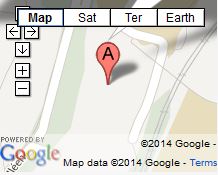The role of transmission and energy storage in European decarbonization towards 2050 Energy
Link to article:
Authors:
Golombek, Rolf, Arne Lind, Hans-Kristian Ringkjøb, Pernille Seljom
Year:
2022
Reference:
Vol 239, part C, 122159Summary
This paper presents analyses of the development of the European electricity sector that is in line with the climate and energy targets of the European Union for 2030 and 2050. The role of energy storage and transmission under various assumptions about a) development of electric battery costs, b) transmission grid expansion restrictions, and c) the variability of future electricity demand is demonstrated. Two models are soft-linked – LIBEMOD, a multimarket energy equilibrium model of Europe, and TIMES-Europe, a bottom-up stochastic model of the European electricity and district heat sectors – to provide an analysis of the decarbonization of the electricity sector that has consistent assumptions about electricity use and fuel prices. To explicitly value flexibility, a stochastic methodology is used to ensure that investment decisions take into account different operational situations that can occur due to weather-dependent renewable generation and the uncertainty of the electricity demand. It is demonstrated that the European power sector can be decarbonised with a 65%–70% share of the electricity supply from wind power and PV in 2050. The cost-efficient investment in stationary batteries is highly dependent on technology development in PV and expansion of the international transmission grid.
Keywords:
Stochastic modelling; European TIMES model; 2050 EU climate target; Battery capacity; Electricity markets
Project:
Oppdragsgiver: Norges forskningsrådOppdragsgivers prosjektnr.: 209698
Frisch prosjekt: 3100 - Oslo Center for Research on Environmentally friendly Energy (CREE)
Oppdragsgiver: Norges forskningsråd
Oppdragsgivers prosjektnr.: 243626
Frisch prosjekt: 3149 - Security of supply in a green power market - The challenges and opportunities of intermittent power
